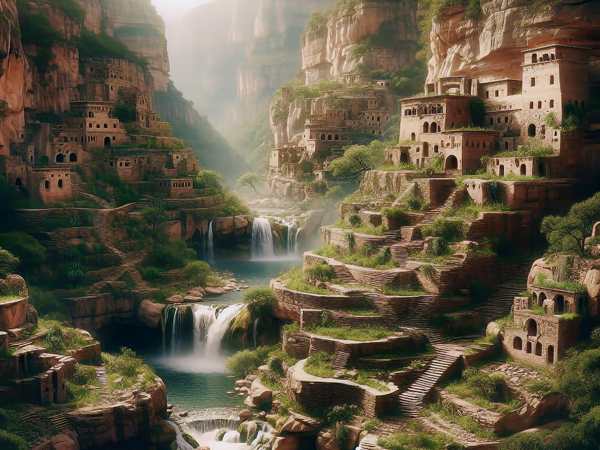Ancient Cavern Mysteries
The Grand Canyon, a symbol of natural wonder, now conceals a secret far more intriguing than its dramatic vistas. Explorations into a newly discovered cavern system have unveiled clues suggesting that an ancient civilization, possibly from the Orient, once thrived beneath the canyon’s surface. This groundbreaking discovery, made by explorer G.E. Kinkaid, has sparked intense interest among archaeologists and historians.
Table of contents
Discovery of the Cavern
G.E. Kinkaid, known for his explorations, made a remarkable find during a solo journey down the Colorado River. While searching for minerals, Kinkaid noticed unusual stains on the east wall of the canyon, about 2,000 feet above the river. After a challenging ascent, he discovered the cavern entrance, nearly 1,500 feet down the sheer canyon wall.
Inside the cavern, Kinkaid found evidence of an advanced civilization. Initial exploration revealed chisel marks on the walls, indicating human craftsmanship. Among the discoveries were mummies, relics, and intricate artifacts, all suggesting a sophisticated society with connections to ancient Egypt or another oriental culture.
The Smithsonians’ Involvement
The Smithsonian Institution, funding the excavation, has conducted extensive research under the direction of Professor S.A. Jordan. The cavern’s main passage stretches nearly a mile underground, branching into a network of smaller rooms and corridors. Several hundred rooms have been discovered, some stretching over 800 feet. These findings include war weapons, copper tools, and artifacts of oriental origin, such as vases and urns.
Scientists are particularly intrigued by the war weapons and copper instruments found. The level of craftsmanship indicates a high degree of civilization. Additionally, the presence of artifacts not native to North America strengthens the theory of an oriental migration.
Structural and Artistic Insights
The cavern’s architecture is equally captivating. The passages are straight and precisely hewn, demonstrating advanced engineering skills. Rooms vary in size, with some measuring up to 40 by 30 feet. Oval-shaped doors and ventilation systems suggest a sophisticated understanding of construction and airflow.
One of the most striking features is the cross-hall, where scientists discovered an idol resembling Buddha. This idol, along with smaller symbolic images and carvings, hints at a complex religious system, possibly linked to ancient Tibetan or Egyptian beliefs.
Mysteries and Theories
Among the cavern’s many mysteries is a chamber emitting a peculiar, “snaky” odor. This chamber remains unexplored due to its hazardous conditions, raising speculations about its contents—ranging from dangerous gases to venomous creatures.
Additionally, the cavern’s hieroglyphics have sparked considerable debate. While they resemble ancient Egyptian writing, their exact meaning remains elusive. The Smithsonian hopes that further research will decode these symbols, potentially linking the Grand Canyon’s ancient inhabitants with distant cultures.
Cultural and Historical Implications
The discoveries align with an intriguing Hopi Indian legend. According to tradition, their ancestors lived in an underworld beneath the Grand Canyon. Disputes between the “people of one heart” and the “people of two hearts” led to their exodus through a treelike passage. This legend parallels the findings, suggesting that the mysterious cavern may indeed be the site of a lost civilization linked to the Hopi’s mythical history.
Future Prospects
The Grand Canyon cavern’s revelations could reshape our understanding of ancient civilizations. The evidence suggests a high level of cultural and technological development, possibly connecting ancient Egyptians or other oriental peoples with North America. Ongoing research aims to uncover more about these enigmatic people and their history.
With plans to expand the research team and facilities, the Smithsonian Institution is poised to make further breakthroughs. As scientists continue to study the cavern’s artifacts and hieroglyphics, the connection between the Grand Canyon and ancient cultures may become clearer, providing invaluable insights into human history.

